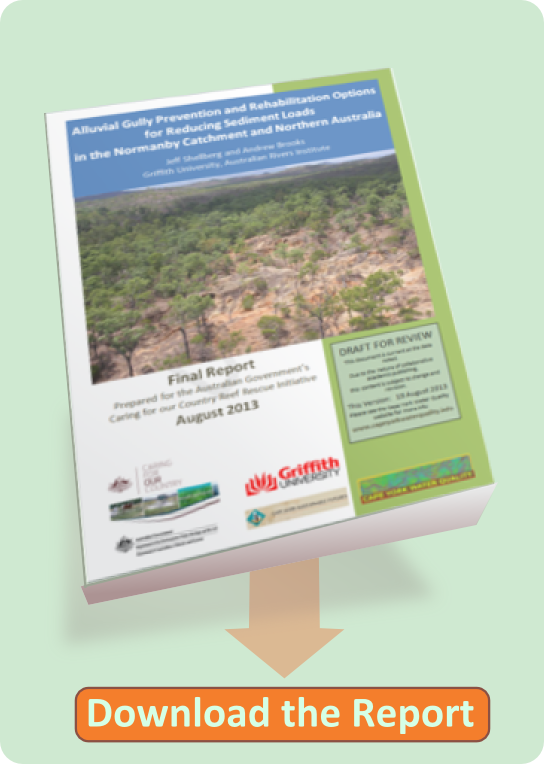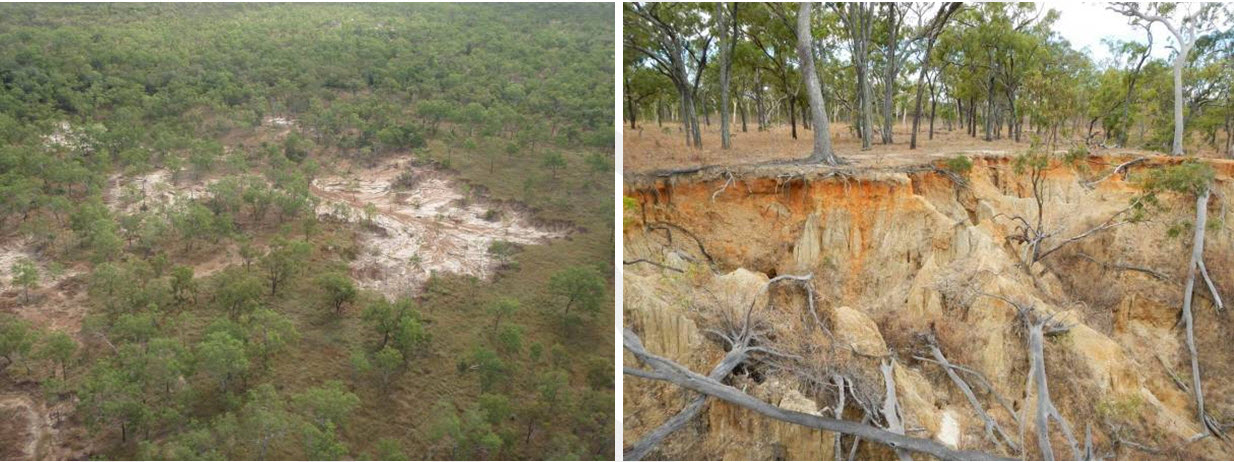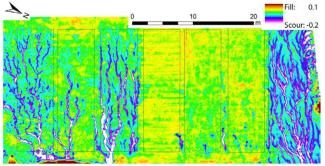Differences in erosion on battered gully slopes treated with different combinations of compost, straw, gypsum, and grass seed, and measured with terrestrial laser scanning (TLS) surveys in 2011 & 2013 (Plate 13)
Project Overview: Gully Prevention and Rehabilitation
 This two-year project funded by the Australian Government’s Caring for our Country Reef Rescue Initiative was undertaken by Griffith University to assess the options for preventing and rehabilitating alluvial gullies in the Normanby Catchment, with implications for alluvial gully management across northern Australia.
This two-year project funded by the Australian Government’s Caring for our Country Reef Rescue Initiative was undertaken by Griffith University to assess the options for preventing and rehabilitating alluvial gullies in the Normanby Catchment, with implications for alluvial gully management across northern Australia.
Alluvial gullies eroding into terraces and elevated floodplains along river frontage with dispersible or sodic soils are a major sediment source in the Normanby catchment and northern Australia. Traditional Owners, cattle graziers and other local residents in the catchment and along Princess Charlotte Bay are concerned about economic, cultural and environmental impacts of local gully erosion and downstream sedimentation.
Large alluvial gullies – and gullies in general – are often considered to be in the ‘too hard basket’ for basic land management action. However, large reductions in elevated sediment loads at the catchment scale will not be achieved unless gully erosion is addressed cumulatively through innovative proactive land management actions.

Aims
The aims of this report were to:
- review the current scientific knowledge on alluvial gully erosion in northern Australia;
- review scientific and grey literature on gully prevention, rehabilitation, and best management practice options applicable to alluvial gullies;
- implement several field trials for preventing and rehabilitating alluvial gullies; and
- provide information toward the future development of a comprehensive regional Best Management Practice (BMP) manual to address alluvial gully erosion based on scientific principles and proven field success.
Social, economic, and political obstacles to cumulatively reducing gully erosion and sediment yield at the catchment scale are also reviewed.
While this report does not provide detailed BMP solutions for all gully erosion issues in the Normanby catchment or elsewhere, it does highlight in detail the nature of the problem and potential research and management actions for the future. Reducing sediment loads to river systems and coastal environments will not occur unless these cumulative and complex physical, chemical, biological processes and social, economic, and political management issues are understood and addressed.
Principles of Gully Erosion Prevention and Control
There are three main approaches to prevent gully initiation and reduce gully erosion once started, which generally should be used in combination.
- Reduce water runoff into and through gullies and drainage hollows.
- Stabilise gully head cuts, sidewalls, and drainage hollows with vegetation and/or physical structure.
- Reduce the gully channel slope and increase roughness using grade control structures and/or vegetation, which will trap sediment and promote revegetation.
More information
Please contact Jeff Shellberg (j.shellberg@griffith.edu.au or 0401-926-288) for more information.

